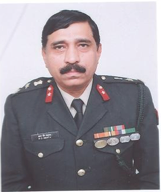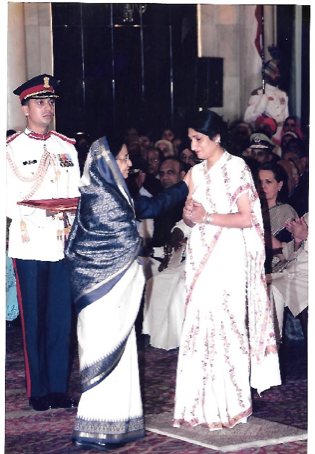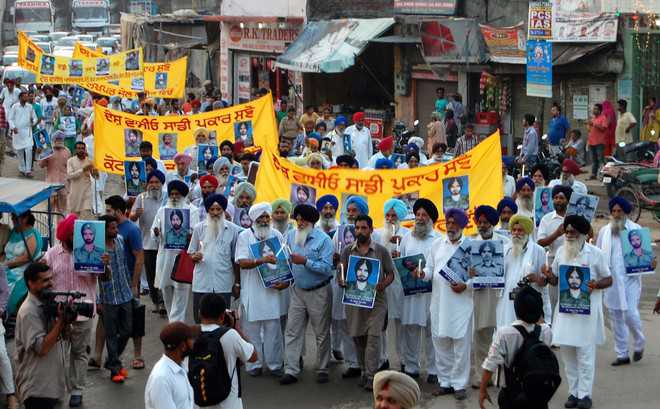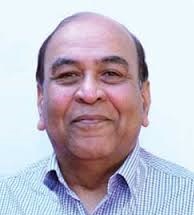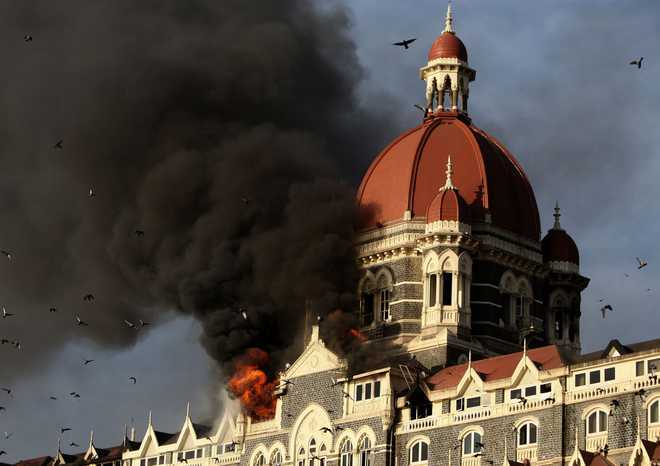On Friday, Avani Chaturvedi, Mohana Singh and Bhawna Kanth etched their names in India’s military history. Hailing from Madhya Pradesh, Rajasthan and Bihar, the states not exactly in the top bracket for their sensitivity to the girl child, the three officers have become the Indian Air Force’s first-ever batch of women fighter pilots. In the process they have demolished quite a few myths that guarded the entry of women in the sword arms of the Indian military. Women were allowed to trundle helicopters and transport planes or join the medical and ordnance wings. But the paternalistic mindset of protecting the fairer sex from harm prevented the induction of women in combat in all the three services.The naysayers had probably not heard of Amelia Earhart. Nearly a century after she disappeared, Amelia lives on as a reminder that the spirit of adventure and risk taking is not the preserve of men alone. Or Ukrainian pilot Nadia Savchenko, captured and released by the Russians. Her consistent defiance in custody turned her into a national hero and a parliamentarian. Down the ages, women have distinguished themselves in combat, from our homegrown Rani of Jhansi to the YPJ, the all-women Kurdish military wing, which were more than a match for the dreaded ISIS. Chaturvedi, Singh and Kanth will undertake operational sorties on Sukhois and MiGs next year. They would do well to remember the steadfastness of the much maligned political class in bringing down the gender barrier. Successive Defence Ministers, especially AK Antony and Manohar Parrikar, as also President Pranab Mukherjee (who has also served as Defence Minister) patiently countered the reservations harboured by the male leadership of the armed forces. The three women combat officers do not amount to much in the Indian armed forces. But a breach has been made. Parrikar has promised to usher a similar “golden letter day” in the Navy and the Army as well. This will require successive political regimes to display the same determination in sweeping away the cobwebs of doubt on inducting women as fighter pilots.
“How could it be true?” Mrs. Sunita Mehta’s story of courage begins with this one question.

Flashback to Then (July 07, 2008): It was like any other morning she says, I dressed up hurriedly, peeped into the room to say “Bye Ravi” and rushed out to the university pick up car waiting for me outside. Usually he would see me off, but that day he was busy reading his e-paper and all I heard was a “Bye and see you”. That was it. Our final goodbye! As they say — sometimes you never know the value of a moment until it becomes a memory.
I was busy taking a session at the Kabul University (Afghanistan), when the Afghan driver came to pick me up earlier than usual and checked if my ‘shauhar’ was okay (the Indian Embassy in Kabul, Afghanistan had been the target of a suicide bomb attack). All through that fateful morning my trust in the Divine Power, kept me going with the belief that he was well. I paid no attention to the signs — his unreachable cellphone, no confirmation from the Indian Embassy; in fact I maintained a very positive faith.
Then it came to me like a bolt from the blue — the news which had sensationalised the world, was the one which shattered mine. I don’t know how I managed to go through that day — leaning for support on my two young children. Through the steady stream of mourners, mechanically we packed the house, loaded everything in an aircraft and came back with a coffin carrying his mortal remains.
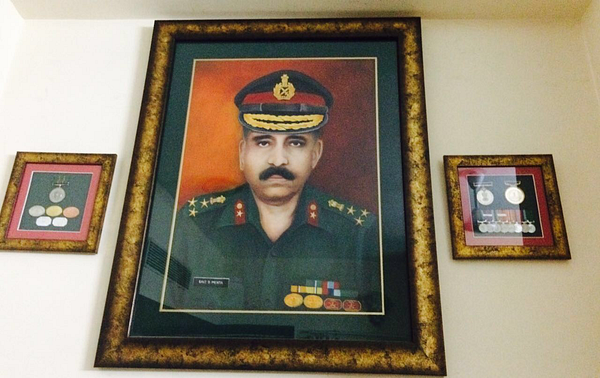
The future has a way of arriving unannounced. Had I ever imagined that from ‘the wife’ I would now be ‘the widow’ of Brig. Mehta? From a happy family we will be a bereaved family — a family who suddenly lost its fulcrum, its hero, doting father and a loving husband.
Many came and paid homage, some cried with me, some were at a loss of words — but I was numb through it all. People thought my children and I were very brave, but did we really have a choice? The pain in my heart was unbearable. It was like we were at the end of a rope — the choice was either to hang on or fall off. Seeing my children put up a brave front was my prime strength. I decided to hang on.
The reality, however, took a long time to come to terms with. For months to come I lived with the hope that he would just walk back into my life and it was all a bad dream. That was just a delusion. What was real were the tearful journey, the unending wait, the lonely life and the question — “Why me?”
As I look back into my life — I think that nothing could have prepared me for dealing with such an atrocity — neither my growing up years as the youngest of five siblings in an environment of love and care, nor my education at a convent school and later post graduation in Mumbai, India (where she majored in Food Science, Nutrition and Dietetics from SVT College of Home Science) nor my job as a Lecturer (in Institute of Hotel Management, Catering Technology & Applied Nutrition in Mumbai, India) or any of the subsequent jobs that I took at my husband’s place of posting. But when I look back, maybe my entire life was a learning to discover my true strengths and abilities.
On meeting her soul mate: Ours was an arranged marriage — I met Ravi for the first time at Dadar (Mumbai, India) railway station while he was transiting after a long Army training to his place of posting. I accompanied my parents to see him there and as luck would have it, his train was delayed and he missed the connecting train. The next train was only the next evening so he had to come home with us. Those days Indian Army officers travelled with a steel trunk instead of a suitcase, along with a bedroll — a visual still intact in my memory.
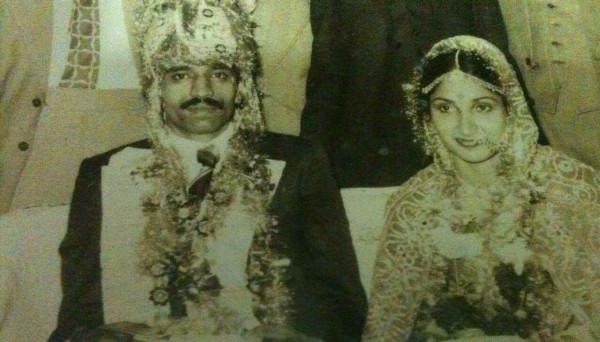
Both of which were not to the taste of a city-bred girl like me! Little did I know that as an Army officer’s wife on every subsequent posting I would be the one asking him to get a few more of ‘those steel trunks’ while packing up the house and he never ever spared a chance to tease me on my ‘acquired taste’.
Living an Army life: meant moving bag and baggage to far flung places but every transition was made so easy by him. He was a thorough Army man — tough and regimented, dedicated to his motherland, parents, wife and children! I didn’t have a care in the world — and even if there were problems, he would solve them easily for me, with a smile and his standard phrase — ‘Not to worry!’
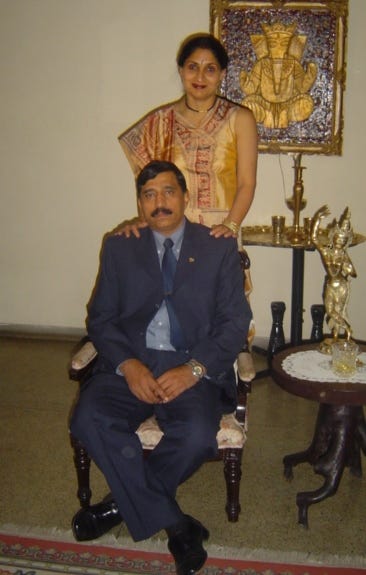
Ravi taught me to live life to the fullest — his positive approach towards life rubbed off on me. He taught me to be confident and deal with situations beyond my control. He loved inviting people over — there was hardly a day when we were not engaged socially.
For us, inspite of our busy work life and social engagements, our children always came first. He was a father to whom both our children looked up to, he was their mentor and guide at every step — giving them wings to fly. A father proud of every achievement of his children, a caring husband motivating me at every step — providing us with a safe haven! A man larger than life who was respected and loved equally by his comrades and subordinates — a hard task master, efficient strategist and very quick on the take — all in all — A Great Man! A man who is still remembered with affection not only by his family but everyone who knew him during his life time!
Rebuilding her life: Losing him so early in life was very difficult to deal with but then we had to follow his lead; he had taught us to live with pride! We were shattered, our hearts cried but there we stood at the pyre — all three of us — so poised — saluting the legend in stoic silence. Why did God take him away so suddenly without giving us a chance? People say it is past life Karma — we don’t know the answer but continue to live with a desire in the heart at every stage of our life — wish he was here — wish I didn’t have to live this life alone without him.
I wasn’t prepared for such eventuality. There he was fit as a fiddle, full of life and next moment he was gone never to come back again. It was traumatic — I didn’t want to live. Who would? The cruel hand of fate had snatched my nest, my happiness with no warning — I too wanted to die. But that’s when my children showed me the path — I had to live for them. I had to fight back — fight with my own demons of insecurity and fear. During this time my children were my pillars of strength. My daughter was still in college then and was very young. My son though older than her was bereft of his ‘hero’. I observed a dramatic change in both my children — from carefree youngsters they became responsible adults overnight. If they could do it for me — so could I.
The hardest for me was to unstring myself from the emotional dependence on my husband and start afresh. It wasn’t easy but I believed only work would give me solace. So there I was, applying for jobs within 15 days of his demise. The Universe charters a path for you and prepares you in its own way for such eventualities. My work experience of 26 years came handy. When I went for my first interview post the tragedy, the gentleman interviewing me stood up to salute me with the words — “ Only an Army wife can do this!”
Today: My life revolves around my children — my daughter who holds my hand and mothers me at every difficult situation and my son who provides me that much needed support without showing or saying a word. The love that I receive from them and their respective spouses has given a new lease to my life. They have taught me to live again. Since we all live in different parts of the world, a call from them is good enough to put me in the right frame of mind and pull me through — I thank technology for shrinking the globe.
Relationships are what life is all about and the greatest gift is the gift of time.Each one of us is running against a deadline, but if from someone’s short supply of time I get a few valuable moments of focused attention — I consider them very precious.
Time is also a great teacher. After my husband’s sudden demise, I realised that all responsibilities have to be shouldered by me now. Back then even small errands like paying bills seemed a daunting task to me. There was even a time when I was scared of working on a laptop (you may laugh at me but it is true!) but now I can’t do without it.
Today, I start my day with work and end it with work too. I am thankful to my present employers for giving a direction to my life. My line of work involves training and dealing with young minds, which though demanding yet is very fulfilling. Work provides solace and keeps my mind ticking.
I always have been a firm believer in the ‘Super Power’ but had lost faith in ‘Him’ during my troubled times. “Why me?” was the question I couldn’t stop asking myself but eventually I came around; even today I feel his presence and know that he is there to guide me at every step . Rhonda Byrne’s book titled ‘Magic’ has further strengthened my belief that —
‘The purpose of life should be a life with a purpose’.
No one has a perfect life but making the most of what is available and to spread happiness and cheer is now the mantra of my life.
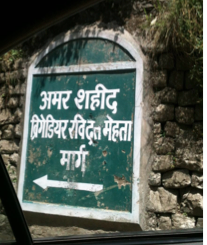
Ravi’s legacy to me is his positive outlook — we cannot control the extent of rain fall in our lives but it is up to us to gear up, look good and hold our head high as we surface out of the waters.
Earlier I could not even manage a day without Ravi, now I have already survived eight winters. Today the world sees me as a survivor, but the truth of my soul is still untold:
And ye, who have met with adversity’s blast,
And have been bowed to earth by its fury;
To whom the twelve months, that have recently pass’d
Were as harsh as a prejudiced jury
Still, fill to the Future! And join in the chime,
The regrets of remembrance too cozen,
And having obtained a new trial of time,
Shout in hopes of a kindlier dozen…
(An excerpt from Mrs Sunita Mehta’s writing in 2010)






















































